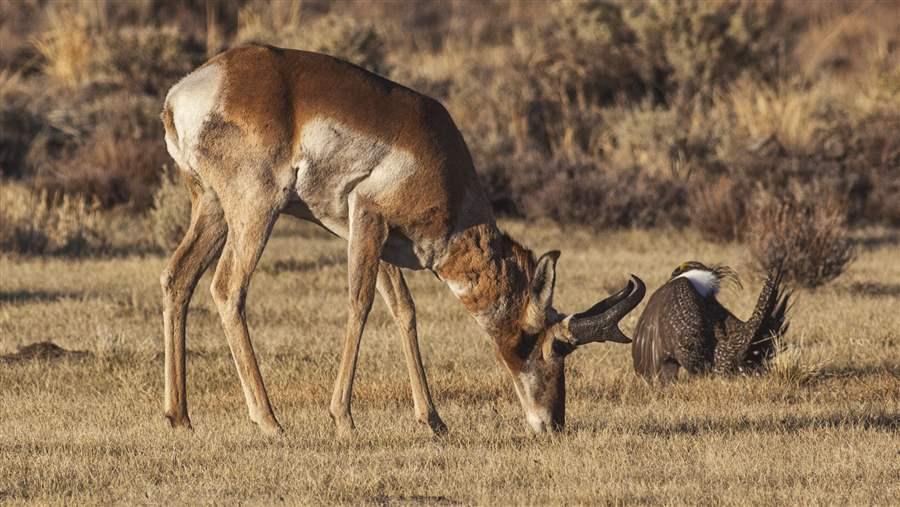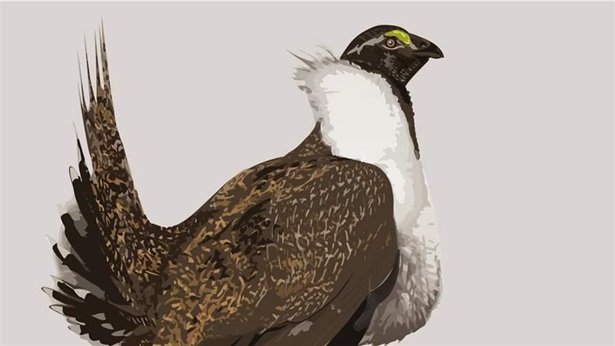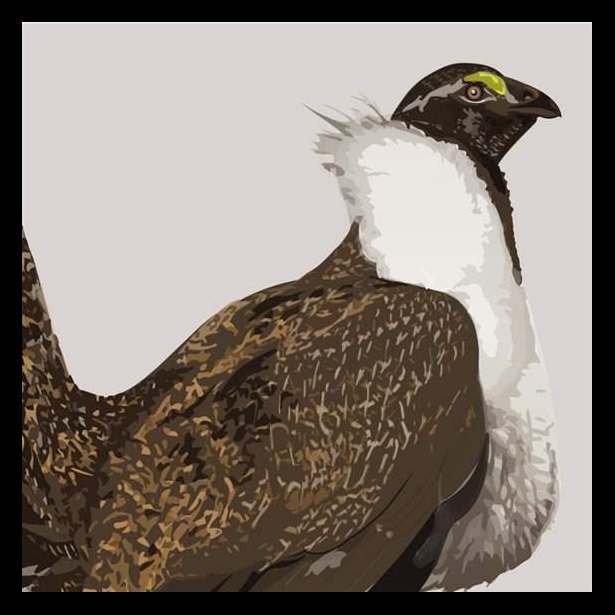Pew Applauds Obama Administration’s Protections for Greater Sage-Grouse Habitat
 Bob Wick
Bob WickPronghorn and greater sage-grouse depend upon sagebrush habitat.
WASHINGTON—The Interior Department’s Bureau of Land Management (BLM) issued final plans today that balance conservation with economic development across 10 Western states. These Records of Decision will direct the management of more than 50 million acres of public lands that are home to the imperiled greater sage-grouse, as well as elk, mule deer, pronghorn, golden eagles, and hundreds of other species.
On public lands in California, Colorado, Idaho, Montana, Nevada, North Dakota, Oregon, South Dakota, Utah, and Wyoming, the plans will provide critical protections for greater sage-grouse habitat and the sagebrush-steppe ecosystem as a whole, as well as for world-class hunting, fishing, backpacking, and birding—important economic drivers for local communities.
Ken Rait, director of the U.S. public lands program at The Pew Charitable Trusts, issued the following statement:
“These strong, science-based plans constitute a historic conservation action. They are both the biggest landscape-level conservation effort ever undertaken by the Bureau of Land Management and the largest land protection initiative of the Obama administration.
“More than half of all sagebrush lands have been lost, resulting in a 95 percent reduction in greater sage-grouse populations. It’s encouraging that as the largest land manager of sage-grouse habitat, the BLM is protecting the lands most important to the bird, which is an indicator species for the health of the sagebrush-steppe ecosystem, and 350 other species.
“Pew commends the leadership of the BLM and the Department of the Interior for this forward-thinking approach. The plans incorporate the best available science and responsibly balance energy development, recreation, grazing, and other activities on public lands while still protecting the Western way of life. That said, we are disappointed that the BLM’s plans did not adequately address the full range of issues in lands that involve more than sage-grouse habitat management, including failing to recognize the wilderness characteristics of the Miles City, MT and Bighorn Basin, WY planning areas, which also merit conservation.
“By considering the expertise of diverse interests that worked together for years to find common ground, and with a strong partnership of state governments, landowners, developers, Western communities, and others involved, BLM was able to largely strike the right balance. These plans will ensure continued productivity of sagebrush habitat and allow for responsible development across the West on lands owned by all Americans.”
For more information, please visit Pew at www.pewtrusts.org/sage-grouse.
The Pew Charitable Trusts is driven by the power of knowledge to solve today’s most challenging problems. Learn more at www.pewtrusts.org.


America’s Overdose Crisis
Sign up for our five-email course explaining the overdose crisis in America, the state of treatment access, and ways to improve care
Sign up

New BLM Plan Will Guide Future of Greater Sage-Grouse
Collected resources on habitat protection for declining species and its habitat









